
A capacitor is an essential component in many electronic devices, serving as a temporary energy storage device that can release its stored energy quickly when needed. Capacitors are used in a wide range of applications, from power supplies and audio equipment to computers and telecommunications devices. They come in various shapes and sizes, with different capacitance values and voltage ratings to suit different needs.When it comes to purchasing a capacitor, the price can vary depending on several factors. In this article, we will explore the different types of capacitors, their uses, and how much you can expect to pay for them.Types of CapacitorsThere are several types of capacitors available on the market, each with its own unique characteristics and applications. Some of the most common types of capacitors include:1. Ceramic Capacitors: These capacitors are made of ceramic materials and are widely used in electronic circuits due to their small size, high capacitance values, and low cost. Ceramic capacitors are suitable for high-frequency applications and are available in both surface mount and through-hole configurations.2. Electrolytic Capacitors: Electrolytic capacitors are polarized capacitors that use an electrolyte as the dielectric material. They have a higher capacitance value compared to ceramic capacitors and are commonly used in power supply circuits and audio equipment. Electrolytic capacitors are available in both aluminum and tantalum constructions.3. Film Capacitors: Film capacitors are made of a thin plastic film as the dielectric material and are known for their high stability and reliability. They are used in a wide range of applications, including filtering, coupling, and timing circuits. Film capacitors are available in various types, such as polyester, polypropylene, and polycarbonate.4. Tantalum Capacitors: Tantalum capacitors are polarized capacitors that use tantalum as the dielectric material. They have a high capacitance value and are known for their low leakage current and high reliability. Tantalum capacitors are commonly used in portable electronic devices, such as smartphones and laptops.5. Supercapacitors: Supercapacitors, also known as ultracapacitors, are a type of capacitor that can store a large amount of energy and release it quickly. They are used in applications that require high power density and fast charging and discharging cycles, such as hybrid vehicles and renewable energy systems.Cost of CapacitorsThe cost of a capacitor can vary depending on several factors, including the type of capacitor, capacitance value, voltage rating, and brand. In general, ceramic capacitors are the most affordable option, with prices ranging from a few cents to a few dollars, depending on the capacitance value and voltage rating.Electrolytic capacitors are slightly more expensive than ceramic capacitors, with prices typically ranging from a few cents to several dollars, depending on the capacitance value, voltage rating, and construction material (aluminum or tantalum).Film capacitors are also relatively affordable, with prices ranging from a few cents to a few dollars, depending on the capacitance value, voltage rating, and type of film material (polyester, polypropylene, or polycarbonate).Tantalum capacitors are the most expensive type of capacitor, with prices ranging from a few cents to several dollars, depending on the capacitance value, voltage rating, and brand. Tantalum capacitors are known for their high reliability and low leakage current, making them a popular choice for critical applications.Supercapacitors are the most expensive type of capacitor, with prices ranging from a few dollars to several hundred dollars, depending on the capacitance value, voltage rating, and brand. Supercapacitors are used in high-power applications that require fast charging and discharging cycles, making them a valuable investment for certain industries.Factors Affecting Capacitor PricesSeveral factors can affect the price of a capacitor, including:1. Capacitance Value: The capacitance value of a capacitor is a measure of its ability to store charge. Capacitors with higher capacitance values are generally more expensive than those with lower capacitance values, as they can store more energy.2. Voltage Rating: The voltage rating of a capacitor indicates the maximum voltage that the capacitor can withstand without breaking down. Capacitors with higher voltage ratings are typically more expensive than those with lower voltage ratings, as they are designed to handle higher voltages.3. Construction Material: The construction material of a capacitor can also affect its price. Capacitors made of high-quality materials, such as tantalum or polypropylene, are generally more expensive than those made of lower-quality materials, such as aluminum or polyester.4. Brand: The brand of a capacitor can also impact its price. Capacitors from well-known brands with a reputation for quality and reliability are typically more expensive than generic or lesser-known brands.5. Packaging: The packaging of a capacitor can also affect its price. Surface mount capacitors are generally more expensive than through-hole capacitors, as they require specialized equipment for installation.ConclusionIn conclusion, the price of a capacitor can vary depending on several factors, including the type of capacitor, capacitance value, voltage rating, construction material, brand, and packaging. While ceramic capacitors are the most affordable option, tantalum capacitors are the most expensive due to their high reliability and low leakage current. Supercapacitors are also a costly investment, but they offer high power density and fast charging and discharging cycles for specific applications.When purchasing a capacitor, it is essential to consider your specific needs and requirements to choose the right type of capacitor for your application. By understanding the different types of capacitors and the factors that affect their prices, you can make an informed decision and ensure that you get the best value for your money.
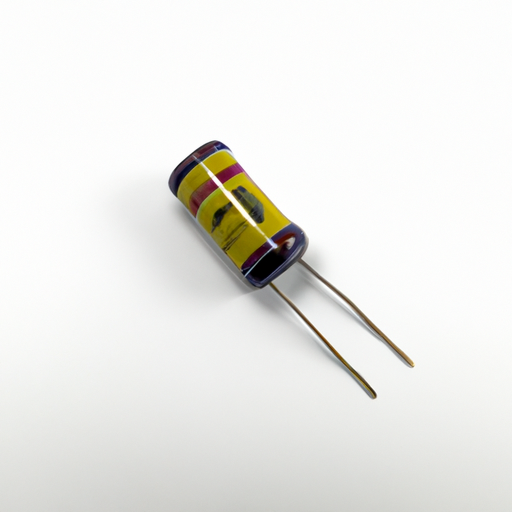
Capacitors are essential components in electronic circuits, used to store and release electrical energy. They come in various shapes and sizes, each designed for specific applications. In this article, we will discuss some of the most popular capacitor models commonly used in electronic devices.1. Ceramic Capacitors:
Ceramic capacitors are one of the most widely used types of capacitors due to their small size, high reliability, and low cost. They are made of ceramic materials with a thin layer of metal on each side, acting as the electrodes. Ceramic capacitors are available in different types, such as multilayer ceramic capacitors (MLCCs) and ceramic disc capacitors. They are commonly used in filtering, decoupling, and timing applications in electronic circuits.2. Electrolytic Capacitors:
Electrolytic capacitors are polarized capacitors that use an electrolyte as the dielectric material. They are available in two main types: aluminum electrolytic capacitors and tantalum electrolytic capacitors. Aluminum electrolytic capacitors have a higher capacitance value and are commonly used in power supply circuits. Tantalum electrolytic capacitors have a smaller size and higher reliability, making them suitable for compact electronic devices.3. Film Capacitors:
Film capacitors are non-polarized capacitors that use a thin film as the dielectric material. They are available in various types, such as polyester film capacitors, polypropylene film capacitors, and metalized film capacitors. Film capacitors have high stability, low leakage current, and high temperature tolerance, making them suitable for high-frequency and high-voltage applications.4. Tantalum Capacitors:
Tantalum capacitors are polarized capacitors that use tantalum as the dielectric material. They have a high capacitance value and low equivalent series resistance (ESR), making them suitable for filtering and decoupling applications in electronic circuits. Tantalum capacitors are available in surface mount and through-hole configurations, with the surface mount type being more commonly used in modern electronic devices.5. Supercapacitors:
Supercapacitors, also known as ultracapacitors or double-layer capacitors, are a type of capacitor that can store a large amount of energy compared to traditional capacitors. They have a high capacitance value and low equivalent series resistance (ESR), allowing them to deliver high power in short bursts. Supercapacitors are commonly used in applications that require rapid energy storage and release, such as hybrid vehicles, renewable energy systems, and portable electronics.6. Variable Capacitors:
Variable capacitors, also known as tuning capacitors or trimmer capacitors, are capacitors with adjustable capacitance values. They are commonly used in radio frequency (RF) circuits, antennas, and tuning circuits to adjust the frequency response of the circuit. Variable capacitors are available in different types, such as air variable capacitors, ceramic trimmer capacitors, and vacuum variable capacitors.7. Mica Capacitors:
Mica capacitors are capacitors that use mica as the dielectric material. They have high stability, low loss, and high insulation resistance, making them suitable for high-frequency and high-temperature applications. Mica capacitors are commonly used in radio frequency (RF) circuits, audio equipment, and precision instrumentation.In conclusion, capacitors are essential components in electronic circuits, used for storing and releasing electrical energy. There are various types of capacitors available, each designed for specific applications based on their capacitance value, voltage rating, size, and other characteristics. The popular capacitor models discussed in this article are commonly used in electronic devices and circuits, providing reliable performance and functionality.
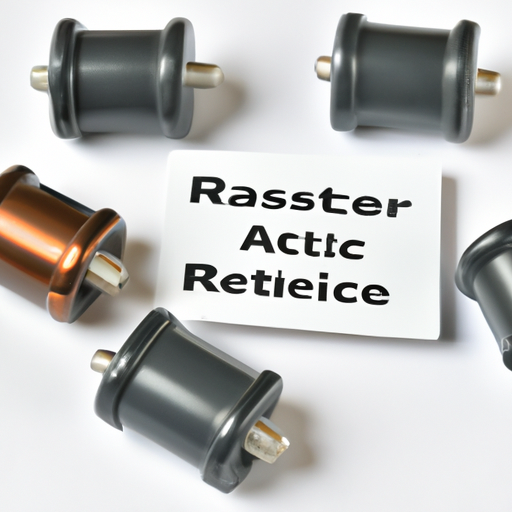
The market size of capacitor resistance is a crucial factor in understanding the overall demand and growth potential of this industry. Capacitor resistance, also known as ESR (Equivalent Series Resistance), is a key parameter in determining the performance and efficiency of capacitors in electronic circuits. As the demand for electronic devices continues to rise, the market for capacitor resistance is expected to grow significantly in the coming years.According to a report by Market Research Future, the global capacitor market is projected to reach a value of $20.2 billion by 2023, with a compound annual growth rate (CAGR) of 4.6% during the forecast period. Capacitors are essential components in a wide range of electronic devices, including smartphones, laptops, televisions, and automotive electronics. The increasing adoption of electric vehicles and the growing demand for energy-efficient devices are driving the growth of the capacitor market.Within the capacitor market, capacitor resistance plays a crucial role in ensuring the reliability and performance of electronic devices. ESR is a measure of the internal resistance of a capacitor, which affects its ability to store and release energy efficiently. High ESR can lead to power losses, reduced efficiency, and decreased lifespan of electronic devices. As a result, manufacturers are increasingly focusing on developing capacitors with low ESR to meet the growing demand for high-performance electronics.The market for capacitor resistance is segmented based on type, application, and region. The different types of capacitors include ceramic, aluminum electrolytic, tantalum, and film capacitors, each with its own unique characteristics and applications. Ceramic capacitors are widely used in consumer electronics and automotive applications, while aluminum electrolytic capacitors are commonly used in power supply and industrial applications.In terms of applications, the capacitor resistance market is divided into consumer electronics, automotive, industrial, telecommunications, and others. Consumer electronics, including smartphones, tablets, and laptops, are the largest application segment for capacitors, driven by the increasing demand for high-performance and energy-efficient devices. The automotive industry is also a significant market for capacitor resistance, with the growing adoption of electric vehicles and advanced driver assistance systems (ADAS) driving the demand for high-quality capacitors.Geographically, the capacitor resistance market is dominated by Asia-Pacific, followed by North America and Europe. Asia-Pacific is home to some of the largest electronics manufacturers in the world, including Samsung, LG, and Huawei, driving the demand for capacitors in the region. China, Japan, and South Korea are the key markets for capacitor resistance in Asia-Pacific, with a strong focus on innovation and technological advancements.In conclusion, the market size of capacitor resistance is expected to grow significantly in the coming years, driven by the increasing demand for high-performance and energy-efficient electronic devices. As the global capacitor market continues to expand, manufacturers are focusing on developing capacitors with low ESR to meet the evolving needs of the electronics industry. With the rise of electric vehicles, smart devices, and IoT applications, the demand for capacitor resistance is expected to continue to grow, making it a key segment in the overall capacitor market.
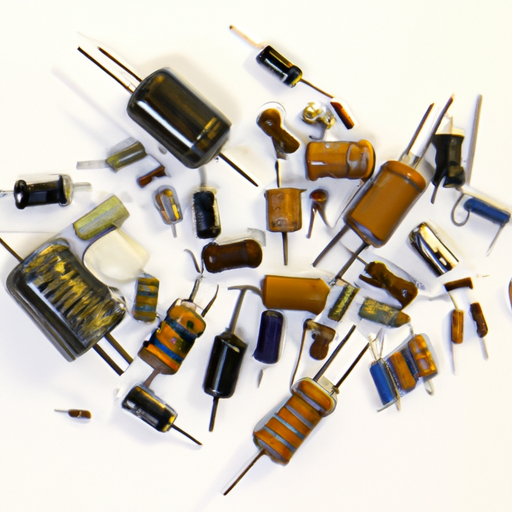
Capacitors are essential components in a wide range of electronic devices and systems, playing a crucial role in storing and releasing electrical energy. These versatile components are used in a variety of practical applications, from power supply units to audio equipment to automotive systems. In this article, we will explore the role of capacitor products in practical applications and how they contribute to the functionality and performance of various electronic devices.Capacitors are passive electronic components that store electrical energy in an electric field. They consist of two conductive plates separated by a dielectric material, which prevents the plates from coming into direct contact with each other. When a voltage is applied across the plates, an electric field is created, causing the plates to store electrical energy. This stored energy can then be released when needed, making capacitors ideal for smoothing out voltage fluctuations, filtering out noise, and providing temporary power backup.One of the most common applications of capacitors is in power supply units. In electronic devices such as computers, televisions, and smartphones, capacitors are used to store energy and regulate the voltage supplied to the various components. By smoothing out voltage fluctuations and filtering out noise, capacitors help ensure a stable and reliable power supply, preventing damage to sensitive electronic components and improving the overall performance of the device.Capacitors are also widely used in audio equipment, such as amplifiers and speakers. In audio systems, capacitors are used to filter out unwanted frequencies, improve the signal quality, and store energy to provide a quick burst of power when needed. By using capacitors in audio equipment, manufacturers can ensure that the sound produced is clear, crisp, and free from distortion, enhancing the listening experience for users.In automotive systems, capacitors play a crucial role in providing temporary power backup and stabilizing the voltage supplied to various components. In modern vehicles, capacitors are used in the ignition system, lighting system, and onboard electronics to ensure a reliable power supply and prevent voltage spikes that could damage sensitive components. By using capacitors in automotive systems, manufacturers can improve the performance, efficiency, and reliability of vehicles, enhancing the driving experience for consumers.Capacitors are also used in a wide range of industrial applications, such as motor control, power factor correction, and energy storage. In motor control systems, capacitors are used to regulate the speed and torque of electric motors, improving efficiency and reducing energy consumption. In power factor correction systems, capacitors are used to improve the power factor of electrical systems, reducing energy losses and improving the overall efficiency of the system. In energy storage systems, capacitors are used to store excess energy generated by renewable sources, such as solar panels and wind turbines, providing a reliable source of power when needed.Overall, capacitor products play a crucial role in a wide range of practical applications, from power supply units to audio equipment to automotive systems. By storing and releasing electrical energy, capacitors help ensure a stable and reliable power supply, improve the performance and efficiency of electronic devices, and enhance the overall user experience. As technology continues to advance, the demand for capacitor products is expected to grow, driving innovation and development in the electronic components industry.
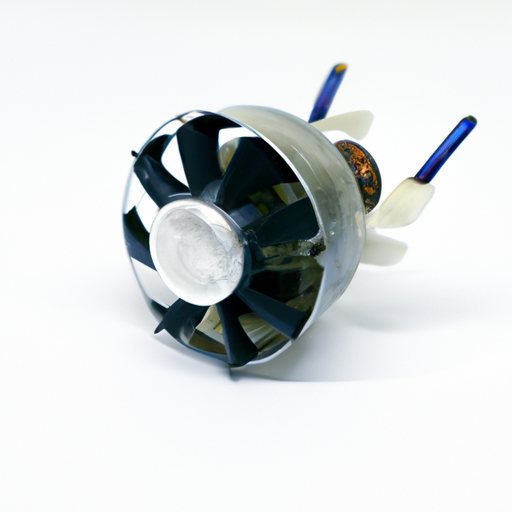
Fan capacitors are essential components in many types of fans, including ceiling fans, exhaust fans, and air conditioning units. These capacitors help regulate the electrical current in the fan motor, ensuring smooth and efficient operation. There are several popular types of fan capacitors available on the market, each with its own unique features and benefits. In this article, we will explore some of the most common types of fan capacitors and their applications.1. Start CapacitorsStart capacitors are designed to provide the initial boost of power needed to start the fan motor. These capacitors have a higher capacitance value than run capacitors, allowing them to store and release more energy quickly. Start capacitors are typically used in single-phase motors, such as those found in ceiling fans and exhaust fans. They are essential for ensuring that the fan motor starts smoothly and efficiently, without any delays or issues.2. Run CapacitorsRun capacitors are designed to help maintain the steady operation of the fan motor once it has started. These capacitors have a lower capacitance value than start capacitors but are still crucial for ensuring the motor runs smoothly and efficiently. Run capacitors help regulate the electrical current in the motor, improving its overall performance and longevity. They are commonly used in both single-phase and three-phase motors, making them a versatile option for a wide range of fan applications.3. Dual CapacitorsDual capacitors combine the functions of both start and run capacitors into a single unit. These capacitors have multiple terminals, allowing them to provide the necessary boost of power to start the motor and then regulate the current during operation. Dual capacitors are commonly used in air conditioning units and other HVAC systems, where space may be limited and a single capacitor is preferred. These capacitors are a convenient and cost-effective option for ensuring the smooth and efficient operation of fan motors.4. Motor Run CapacitorsMotor run capacitors are specifically designed for use in fan motors, providing the necessary capacitance to regulate the electrical current and improve motor performance. These capacitors are typically used in single-phase motors, such as those found in ceiling fans and exhaust fans. Motor run capacitors are essential for ensuring the smooth and efficient operation of fan motors, helping to extend their lifespan and reduce the risk of malfunctions or breakdowns.5. Oil-filled CapacitorsOil-filled capacitors are a type of capacitor that uses oil as a dielectric material, providing excellent insulation and heat dissipation properties. These capacitors are commonly used in high-temperature applications, such as in industrial fans and HVAC systems. Oil-filled capacitors are known for their durability and reliability, making them a popular choice for demanding fan applications. These capacitors are designed to withstand extreme temperatures and harsh operating conditions, ensuring the smooth and efficient operation of fan motors.6. Electrolytic CapacitorsElectrolytic capacitors are a type of capacitor that uses an electrolyte solution as a dielectric material, providing high capacitance values in a compact size. These capacitors are commonly used in electronic devices and small fans, where space may be limited. Electrolytic capacitors are known for their high capacitance values and low cost, making them a popular choice for budget-friendly fan applications. These capacitors are designed to provide the necessary boost of power to start the motor and regulate the current during operation, ensuring the smooth and efficient operation of fan motors.In conclusion, fan capacitors are essential components in many types of fans, helping to regulate the electrical current in the motor and ensure smooth and efficient operation. There are several popular types of fan capacitors available on the market, each with its own unique features and benefits. Whether you need a start capacitor for a ceiling fan or a dual capacitor for an air conditioning unit, there is a wide range of options to choose from. By selecting the right type of fan capacitor for your specific application, you can help extend the lifespan of your fan motor and improve its overall performance.
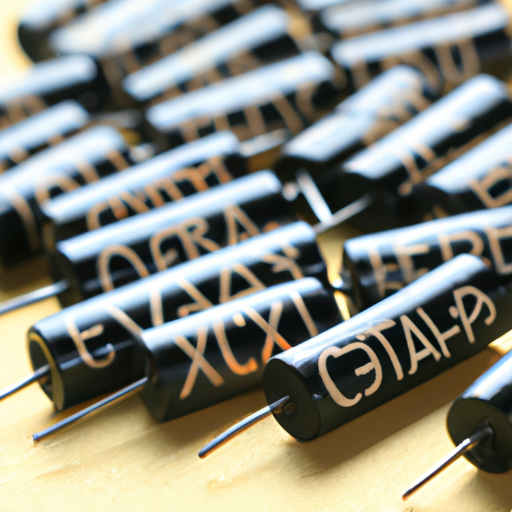
Capacitors are essential components in electronic circuits, used for storing and releasing electrical energy. They come in various shapes and sizes, and are made from different materials depending on their intended application. Capacitors have a wide range of uses in electronics, from filtering out noise in power supplies to timing circuits in oscillators. In this article, we will explore the advantages of using capacitor capacitor formula products in electronic circuits.One of the main advantages of using capacitor capacitor formula products is their ability to store and release electrical energy quickly. This makes them ideal for applications where a rapid response is required, such as in power supplies or motor control circuits. Capacitors can charge and discharge much faster than batteries, making them a more efficient choice for certain applications.Another advantage of using capacitor capacitor formula products is their ability to filter out noise and stabilize voltage levels in electronic circuits. Capacitors can smooth out fluctuations in voltage, ensuring a steady and reliable power supply to sensitive components. This is particularly important in audio and video equipment, where even small fluctuations in voltage can cause distortion or interference.Capacitors are also used in timing circuits, where they can control the frequency of oscillators and regulate the timing of signals. By adjusting the capacitance of a capacitor, the frequency of an oscillator can be fine-tuned to match the desired output. This makes capacitors an essential component in many electronic devices, from radios to computers.In addition to their technical advantages, capacitor capacitor formula products are also cost-effective and easy to manufacture. Capacitors are relatively simple devices, consisting of two conductive plates separated by a dielectric material. This makes them easy to mass-produce, resulting in lower costs for consumers. Capacitors are also available in a wide range of sizes and capacitance values, making it easy to find the right component for any application.Capacitors are also highly reliable components, with a long lifespan and minimal maintenance requirements. Unlike batteries, which degrade over time and need to be replaced regularly, capacitors can last for years without any significant loss in performance. This makes them a cost-effective choice for long-term use in electronic devices.Overall, capacitor capacitor formula products offer a range of advantages for electronic circuits. From their ability to store and release energy quickly to their role in filtering out noise and stabilizing voltage levels, capacitors are essential components in many electronic devices. With their cost-effective manufacturing process and long lifespan, capacitors are a reliable and efficient choice for a wide range of applications. Whether you are designing a power supply, timing circuit, or audio amplifier, capacitor capacitor formula products can help you achieve the performance and reliability you need.
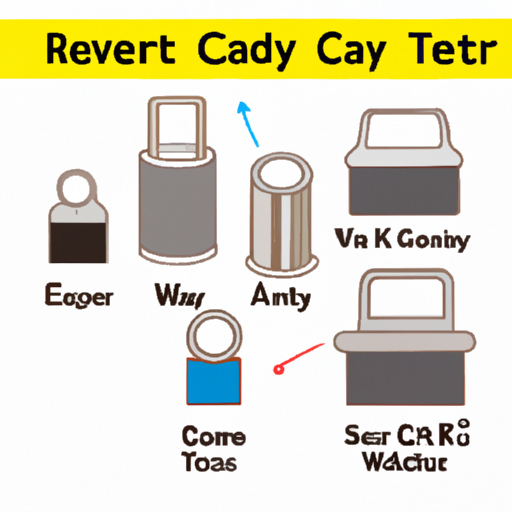
Series capacitors are an essential component in many electrical systems, providing a range of benefits and functionalities. These capacitors are used in a variety of applications, from power factor correction to voltage regulation and filtering. In this article, we will explore the key product categories of series capacitors and their importance in different industries.1. Power factor correction capacitors:One of the primary applications of series capacitors is power factor correction. Power factor is a measure of how effectively electrical power is being used in a system. A low power factor can result in increased energy consumption and higher electricity bills. Series capacitors are used to improve power factor by offsetting the inductive reactance of the system, thereby reducing the overall power consumption.Power factor correction capacitors are available in a range of sizes and configurations to suit different applications. They are typically installed in parallel with the load to provide reactive power compensation. These capacitors are essential in industries where a high power factor is required, such as manufacturing plants, data centers, and commercial buildings.2. Voltage regulation capacitors:Series capacitors are also used for voltage regulation in electrical systems. These capacitors are designed to stabilize the voltage levels in a circuit, ensuring a consistent and reliable power supply. Voltage regulation capacitors are commonly used in power distribution systems, renewable energy systems, and electronic devices.Voltage regulation capacitors come in various types, including electrolytic capacitors, ceramic capacitors, and film capacitors. They are designed to handle different voltage levels and current ratings, depending on the specific requirements of the application. These capacitors play a crucial role in maintaining the stability of the electrical grid and preventing voltage fluctuations that can damage sensitive equipment.3. Filtering capacitors:Another key product category of series capacitors is filtering capacitors. These capacitors are used to remove unwanted noise and interference from electrical signals, ensuring a clean and reliable power supply. Filtering capacitors are essential in applications where signal integrity is critical, such as audio equipment, telecommunications systems, and medical devices.Filtering capacitors are available in different configurations, including low-pass filters, high-pass filters, and band-pass filters. They are designed to attenuate specific frequencies while allowing others to pass through, effectively cleaning up the signal. Filtering capacitors are often used in conjunction with other components, such as inductors and resistors, to create a complete filtering solution.4. Energy storage capacitors:Series capacitors are also used for energy storage in various applications, such as renewable energy systems, electric vehicles, and power backup systems. These capacitors store electrical energy and release it when needed, providing a reliable source of power during outages or peak demand periods. Energy storage capacitors are essential for ensuring a stable and resilient power supply in modern electrical systems.Energy storage capacitors come in different types, including supercapacitors, electrolytic capacitors, and double-layer capacitors. They are designed to store large amounts of energy in a compact and efficient manner, making them ideal for applications where space is limited. Energy storage capacitors are increasingly being used in conjunction with renewable energy sources, such as solar panels and wind turbines, to store excess energy for later use.In conclusion, series capacitors play a crucial role in a wide range of electrical systems, providing power factor correction, voltage regulation, filtering, and energy storage capabilities. These capacitors are essential for ensuring the reliability and efficiency of electrical systems in various industries. By understanding the key product categories of series capacitors and their applications, engineers and designers can select the right capacitors for their specific requirements, ensuring optimal performance and reliability.
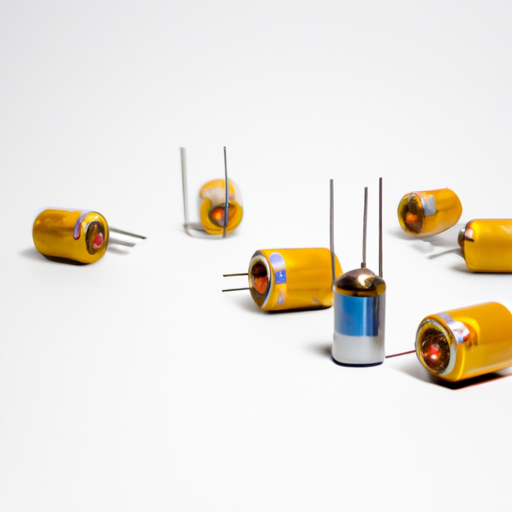
Smart capacitors are a revolutionary technology that is changing the way we think about energy storage and power management. These advanced capacitors offer a wide range of advantages over traditional capacitors, making them an attractive option for a variety of applications. In this article, we will explore the many benefits of smart capacitor products and how they are transforming the energy storage industry.One of the key advantages of smart capacitors is their ability to store and release energy more efficiently than traditional capacitors. Smart capacitors are equipped with advanced control systems that allow them to optimize their energy storage and release capabilities based on the specific needs of the application. This means that smart capacitors can deliver power more quickly and efficiently, making them ideal for high-performance applications where rapid energy delivery is critical.Another advantage of smart capacitors is their ability to monitor and adjust their performance in real-time. Smart capacitors are equipped with sensors and control systems that allow them to continuously monitor factors such as temperature, voltage, and current. This real-time monitoring allows smart capacitors to adjust their performance to optimize energy storage and delivery, ensuring maximum efficiency and reliability.Smart capacitors also offer enhanced safety features compared to traditional capacitors. The advanced control systems in smart capacitors can detect and respond to potential safety hazards, such as overcharging or overheating, to prevent damage or failure. This added layer of safety makes smart capacitors a more reliable and secure option for a wide range of applications.In addition to their performance and safety benefits, smart capacitors also offer increased flexibility and versatility. Smart capacitors can be easily integrated into a variety of systems and applications, making them a versatile energy storage solution for a wide range of industries. Whether used in consumer electronics, automotive systems, renewable energy systems, or industrial applications, smart capacitors can provide reliable and efficient energy storage capabilities.One of the key advantages of smart capacitors is their ability to improve energy efficiency. By optimizing energy storage and delivery, smart capacitors can help reduce energy waste and improve overall system efficiency. This can lead to cost savings and environmental benefits, making smart capacitors a sustainable energy storage solution for a variety of applications.Smart capacitors also offer enhanced durability and longevity compared to traditional capacitors. The advanced control systems in smart capacitors help to extend their lifespan by preventing damage from overcharging, overheating, or other potential hazards. This increased durability makes smart capacitors a more reliable and long-lasting energy storage solution for demanding applications.Overall, smart capacitors offer a wide range of advantages over traditional capacitors, making them an attractive option for a variety of applications. From improved energy efficiency and performance to enhanced safety and durability, smart capacitors are transforming the energy storage industry and providing a more reliable and efficient energy storage solution for a wide range of industries. As the demand for energy storage solutions continues to grow, smart capacitors are poised to play a key role in meeting the needs of the future.

Capacity calculation is a crucial aspect of business operations, as it helps organizations determine the maximum amount of work that can be completed in a given period of time. By accurately calculating capacity, businesses can optimize their resources, improve efficiency, and meet customer demands effectively. There are several popular models of capacity calculation that businesses can use to determine their capacity and make informed decisions about their operations.1. Theoretical Capacity: The theoretical capacity model is based on the maximum output that a system can achieve under ideal conditions. It does not take into account any downtime, inefficiencies, or other factors that may affect actual production. The theoretical capacity is often used as a benchmark for measuring the performance of a system and identifying areas for improvement.2. Practical Capacity: Practical capacity is a more realistic measure of a system's output, taking into account factors such as downtime, maintenance, and other inefficiencies. Practical capacity is often used to determine the actual capacity of a system and to identify opportunities for increasing efficiency and productivity.3. Rated Capacity: Rated capacity is the maximum output that a system can achieve under normal operating conditions. It takes into account factors such as equipment limitations, operator skill levels, and other constraints that may affect production. Rated capacity is often used to determine the capacity of a system in real-world conditions and to make decisions about resource allocation and production scheduling.4. Effective Capacity: Effective capacity is the maximum output that a system can achieve under normal operating conditions, taking into account factors such as downtime, maintenance, and other inefficiencies. Effective capacity is often used to determine the actual capacity of a system and to identify opportunities for increasing efficiency and productivity.5. Design Capacity: Design capacity is the maximum output that a system can achieve under ideal conditions, taking into account factors such as equipment limitations, operator skill levels, and other constraints. Design capacity is often used to determine the capacity of a system in theoretical terms and to make decisions about resource allocation and production scheduling.6. Actual Capacity: Actual capacity is the actual output that a system can achieve in real-world conditions, taking into account factors such as downtime, maintenance, and other inefficiencies. Actual capacity is often used to measure the performance of a system and to identify opportunities for increasing efficiency and productivity.7. Maximum Capacity: Maximum capacity is the maximum output that a system can achieve under ideal conditions, taking into account all possible constraints and limitations. Maximum capacity is often used as a benchmark for measuring the performance of a system and identifying areas for improvement.In conclusion, capacity calculation is a critical aspect of business operations, as it helps organizations determine the maximum amount of work that can be completed in a given period of time. By using popular models of capacity calculation such as theoretical capacity, practical capacity, rated capacity, effective capacity, design capacity, actual capacity, and maximum capacity, businesses can optimize their resources, improve efficiency, and meet customer demands effectively. By accurately calculating capacity, businesses can make informed decisions about their operations and achieve their production goals.
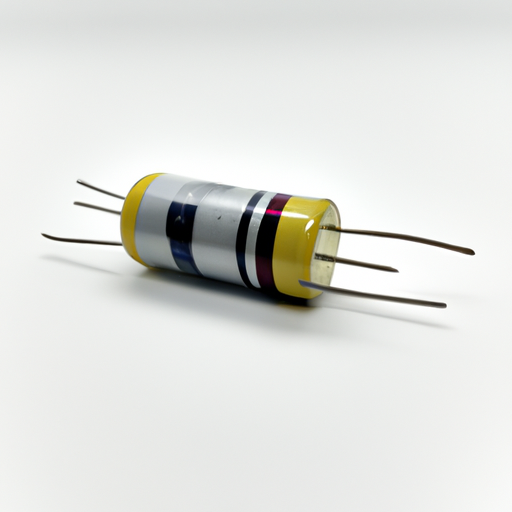
Capacitors are essential components in electronic devices, serving as energy storage devices that store and release electrical energy as needed. They are used in a wide range of applications, from power supplies and audio equipment to computers and telecommunications devices. As such, it is crucial for capacitor manufacturers to adhere to strict product standards to ensure the quality and reliability of their products.Product standards for capacitor companies are established to ensure that capacitors meet certain criteria for performance, safety, and reliability. These standards are set by organizations such as the International Electrotechnical Commission (IEC), the Institute of Electrical and Electronics Engineers (IEEE), and the Electronic Industries Alliance (EIA). Compliance with these standards is essential for capacitor manufacturers to demonstrate the quality and reliability of their products to customers and regulatory authorities.One of the key product standards for capacitors is the IEC 60384 series of standards, which covers fixed capacitors for use in electronic equipment. These standards specify requirements for capacitor construction, materials, performance, and testing. Capacitor manufacturers must ensure that their products meet the requirements of these standards to ensure that they are safe and reliable for use in electronic devices.Another important product standard for capacitors is the EIA-535-A standard, which covers tantalum capacitors for use in electronic equipment. This standard specifies requirements for the construction, materials, performance, and testing of tantalum capacitors. Capacitor manufacturers must comply with this standard to ensure that their tantalum capacitors meet the necessary criteria for performance and reliability.In addition to these specific product standards, capacitor manufacturers must also adhere to general quality standards such as ISO 9001, which sets out requirements for quality management systems. Compliance with ISO 9001 ensures that capacitor manufacturers have processes in place to consistently produce high-quality products that meet customer requirements.Product standards for capacitor companies also cover aspects such as environmental compliance, safety, and reliability. Capacitor manufacturers must ensure that their products comply with regulations such as the Restriction of Hazardous Substances (RoHS) directive, which restricts the use of certain hazardous substances in electronic equipment. They must also conduct rigorous testing to ensure that their capacitors meet performance specifications and are reliable under various operating conditions.Overall, product standards for capacitor companies are essential for ensuring the quality, safety, and reliability of capacitors used in electronic devices. By adhering to these standards, capacitor manufacturers can demonstrate the quality of their products to customers and regulatory authorities, and ensure that their capacitors meet the necessary criteria for performance and reliability. Compliance with product standards is crucial for capacitor companies to maintain their reputation and competitiveness in the market.
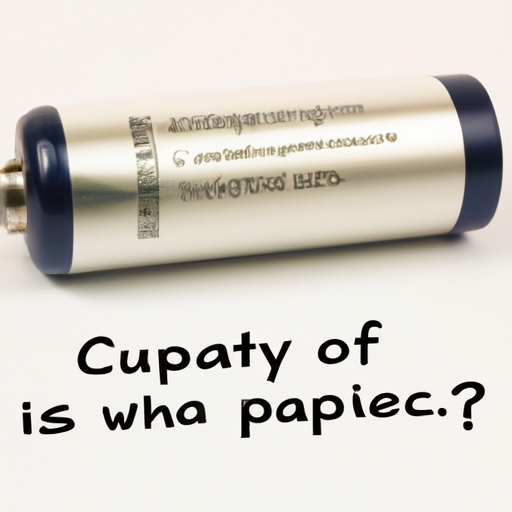
A capacitor is a passive electronic component that stores and releases electrical energy in a circuit. It is commonly used in a wide range of electronic devices and systems to perform various functions such as filtering, smoothing, timing, and energy storage. Capacitors come in different types and configurations, each designed for specific applications and requirements. In this article, we will explore the various types of capacitors and their uses in different industries.1. Ceramic Capacitors:
Ceramic capacitors are one of the most common types of capacitors used in electronic circuits. They are made of ceramic materials such as barium titanate or titanium dioxide, which have high dielectric constants. Ceramic capacitors are known for their stability, reliability, and low cost. They are used in a wide range of applications, including decoupling, filtering, timing, and coupling.2. Electrolytic Capacitors:
Electrolytic capacitors are polarized capacitors that use an electrolyte as the dielectric material. They are available in two types: aluminum electrolytic capacitors and tantalum electrolytic capacitors. Electrolytic capacitors have high capacitance values and are commonly used in power supply circuits, audio amplifiers, and other applications that require high capacitance values.3. Film Capacitors:
Film capacitors are non-polarized capacitors that use a thin film of plastic or metal as the dielectric material. They are known for their high stability, low leakage current, and high temperature tolerance. Film capacitors are used in a wide range of applications, including filtering, coupling, timing, and energy storage.4. Tantalum Capacitors:
Tantalum capacitors are polarized capacitors that use tantalum as the dielectric material. They are known for their high capacitance values, low leakage current, and high reliability. Tantalum capacitors are used in applications that require high capacitance values and high stability, such as power supply circuits, audio amplifiers, and medical devices.5. Supercapacitors:
Supercapacitors, also known as ultracapacitors, are a type of capacitor that stores energy using electrostatic double-layer capacitance. They have high capacitance values and can store and release energy quickly. Supercapacitors are used in applications that require high power density, such as hybrid and electric vehicles, renewable energy systems, and industrial equipment.6. Variable Capacitors:
Variable capacitors are capacitors whose capacitance value can be adjusted manually or electronically. They are used in tuning circuits, frequency modulation circuits, and other applications that require variable capacitance values. Variable capacitors are available in different configurations, including air variable capacitors, trimmer capacitors, and varactor diodes.7. Mica Capacitors:
Mica capacitors are capacitors that use mica as the dielectric material. They are known for their high stability, low loss, and high temperature tolerance. Mica capacitors are used in high-frequency applications, such as radio frequency circuits, microwave circuits, and radar systems.In conclusion, capacitors are essential components in electronic circuits and systems, performing various functions such as filtering, smoothing, timing, and energy storage. There are different types of capacitors available, each designed for specific applications and requirements. Understanding the different types of capacitors and their uses can help engineers and designers select the right capacitor for their projects and ensure optimal performance and reliability.
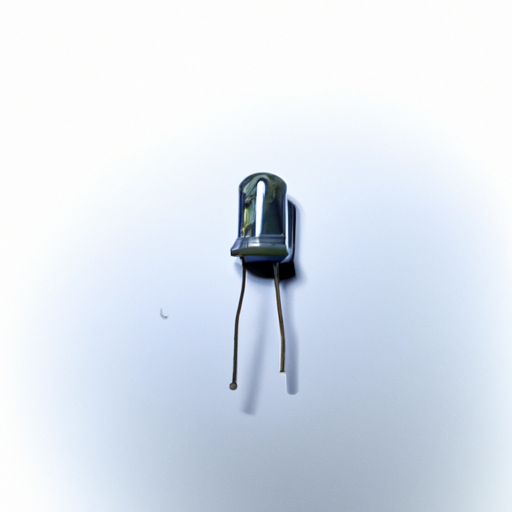
Capacitors are electronic components that store and release electrical energy. They are commonly used in a wide range of electronic devices, from simple circuits to complex systems. Capacitors come in various shapes and sizes, but they all work on the same basic principle: they consist of two conductive plates separated by an insulating material, known as a dielectric.When a voltage is applied across the plates of a capacitor, it creates an electric field between them. This electric field causes positive charges to accumulate on one plate and negative charges to accumulate on the other plate. The amount of charge that can be stored on a capacitor is determined by its capacitance, which is measured in farads (F).Capacitors are used in electronic circuits for a variety of purposes, including filtering out noise, smoothing out voltage fluctuations, and storing energy. They can also be used to create time delays, oscillators, and other complex functions. In this article, we will explore how capacitors work and how they are used in electronic circuits.Types of CapacitorsThere are many different types of capacitors, each with its own characteristics and applications. Some of the most common types of capacitors include:1. Ceramic capacitors: These capacitors are made of ceramic materials and are commonly used in high-frequency applications. They are small in size and have a high capacitance value, making them ideal for compact circuits.2. Electrolytic capacitors: These capacitors are polarized, meaning they have a positive and negative terminal. They are commonly used in power supply circuits and have a high capacitance value.3. Tantalum capacitors: These capacitors are similar to electrolytic capacitors but are smaller in size and have a higher capacitance value. They are commonly used in portable electronic devices.4. Film capacitors: These capacitors are made of a thin film of metal or plastic and are commonly used in audio circuits and high-voltage applications.How Capacitors WorkCapacitors work by storing electrical energy in an electric field. When a voltage is applied across the plates of a capacitor, it creates an electric field between them. This electric field causes positive charges to accumulate on one plate and negative charges to accumulate on the other plate. The amount of charge that can be stored on a capacitor is determined by its capacitance, which is measured in farads (F).The capacitance of a capacitor is determined by its physical characteristics, such as the size of the plates, the distance between them, and the dielectric material used. The capacitance of a capacitor can be calculated using the formula:C = εA/dWhere:
C = capacitance (in farads)
ε = permittivity of the dielectric material
A = area of the plates
d = distance between the platesThe energy stored in a capacitor can be calculated using the formula:E = 0.5CV^2Where:
E = energy stored (in joules)
C = capacitance (in farads)
V = voltage across the capacitorWhen a capacitor is connected to a circuit, it can store energy when the voltage across it is increasing and release energy when the voltage is decreasing. This property of capacitors makes them useful for smoothing out voltage fluctuations and filtering out noise in electronic circuits.Applications of CapacitorsCapacitors are used in a wide range of electronic devices and circuits. Some common applications of capacitors include:1. Power supply filtering: Capacitors are used in power supply circuits to smooth out voltage fluctuations and provide a stable DC output.2. Timing circuits: Capacitors can be used to create time delays in electronic circuits, such as in oscillators and timers.3. Coupling and decoupling: Capacitors are used to couple or decouple signals between different parts of a circuit, preventing unwanted interference.4. Energy storage: Capacitors can store energy and release it when needed, making them useful in applications such as flash photography and defibrillators.5. Motor starting: Capacitors are used in motor starting circuits to provide an initial boost of power to start the motor.In conclusion, capacitors are essential components in electronic circuits, storing and releasing electrical energy to perform a variety of functions. They come in various types and sizes, each with its own characteristics and applications. Understanding how capacitors work and how they are used in electronic circuits is essential for anyone working in the field of electronics.
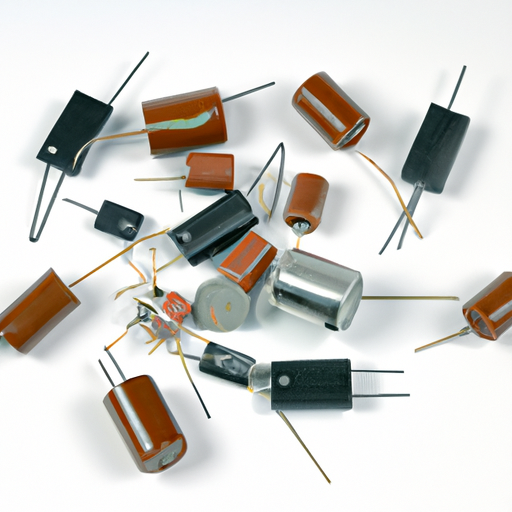
Capacitor film devices are essential components in a wide range of electronic devices, from smartphones and laptops to industrial machinery and automotive systems. These devices store and release electrical energy, helping to regulate voltage and filter out noise in electronic circuits. As technology continues to advance, the demand for high-quality capacitor film devices is on the rise.When it comes to purchasing capacitor film devices, there are several different models that buyers can choose from. Each model has its own unique features and benefits, making it important for buyers to understand their options before making a purchase. In this article, we will explore the different purchasing models for the latest capacitor film devices and discuss the factors that buyers should consider when making a decision.1. Fixed CapacitorsFixed capacitors are the most common type of capacitor film devices and are used in a wide range of electronic applications. These capacitors have a fixed capacitance value, meaning that they store a specific amount of electrical energy. Fixed capacitors are available in a variety of sizes and shapes, making them suitable for different types of electronic devices.When purchasing fixed capacitors, buyers should consider the capacitance value, voltage rating, and temperature rating of the device. The capacitance value determines how much energy the capacitor can store, while the voltage rating indicates the maximum voltage that the capacitor can handle. The temperature rating is important for ensuring that the capacitor can operate effectively in different environmental conditions.2. Variable CapacitorsVariable capacitors are another type of capacitor film device that allows users to adjust the capacitance value. These capacitors are commonly used in tuning circuits, where the capacitance needs to be adjusted to tune a radio or television signal. Variable capacitors are available in different designs, including rotary and trimmer capacitors.When purchasing variable capacitors, buyers should consider the capacitance range, voltage rating, and tuning mechanism of the device. The capacitance range determines the minimum and maximum capacitance values that the capacitor can achieve, while the voltage rating indicates the maximum voltage that the capacitor can handle. The tuning mechanism determines how the capacitance value can be adjusted, whether through a knob or a screw.3. Surface Mount CapacitorsSurface mount capacitors are a type of capacitor film device that is designed to be mounted directly onto the surface of a printed circuit board (PCB). These capacitors are smaller and more compact than traditional through-hole capacitors, making them ideal for applications where space is limited. Surface mount capacitors are available in a variety of sizes and capacitance values.When purchasing surface mount capacitors, buyers should consider the package size, capacitance value, and voltage rating of the device. The package size determines the dimensions of the capacitor, while the capacitance value and voltage rating are important for ensuring that the capacitor meets the requirements of the electronic circuit.4. High Voltage CapacitorsHigh voltage capacitors are designed to handle higher voltages than standard capacitors, making them suitable for applications where high voltage levels are present. These capacitors are commonly used in power supplies, motor drives, and other high-power electronic devices. High voltage capacitors are available in different designs, including ceramic, tantalum, and film capacitors.When purchasing high voltage capacitors, buyers should consider the voltage rating, capacitance value, and temperature rating of the device. The voltage rating indicates the maximum voltage that the capacitor can handle, while the capacitance value determines how much energy the capacitor can store. The temperature rating is important for ensuring that the capacitor can operate effectively in high-temperature environments.5. Specialty CapacitorsIn addition to standard capacitor film devices, there are also specialty capacitors that are designed for specific applications. These capacitors may have unique features, such as high temperature resistance, low ESR (equivalent series resistance), or high ripple current handling capacity. Specialty capacitors are available in a variety of designs and configurations, making them suitable for a wide range of applications.When purchasing specialty capacitors, buyers should consider the specific requirements of their application, such as temperature range, ESR, and ripple current handling capacity. It is important to choose a capacitor that meets the specific needs of the electronic circuit to ensure optimal performance and reliability.In conclusion, there are several purchasing models for the latest capacitor film devices, each with its own unique features and benefits. Whether buyers are looking for fixed capacitors, variable capacitors, surface mount capacitors, high voltage capacitors, or specialty capacitors, it is important to consider the capacitance value, voltage rating, temperature rating, and other factors before making a purchase. By understanding the different purchasing models for capacitor film devices, buyers can make informed decisions and choose the right capacitor for their electronic applications.
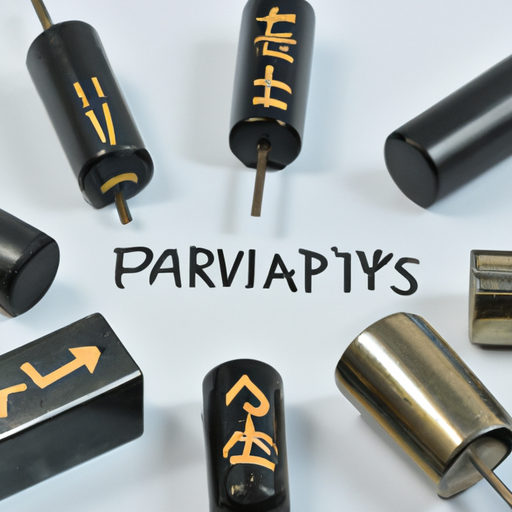
Capacitors are essential components in electronic circuits, playing a crucial role in storing and releasing electrical energy. They are widely used in various applications, from power supplies and signal processing to filtering and timing circuits. Capacitors come in different types and sizes, each with its own unique characteristics and advantages. In this article, we will explore the benefits of capacitors and capacitance products in electronic systems.One of the primary advantages of capacitors is their ability to store electrical energy. When a voltage is applied across the terminals of a capacitor, it stores energy in the form of an electric field. This stored energy can be released when needed, providing a quick and efficient source of power for electronic devices. Capacitors are commonly used in power supply circuits to smooth out voltage fluctuations and provide a stable source of power to sensitive components.Another advantage of capacitors is their ability to filter out unwanted noise and interference in electronic circuits. Capacitors can block high-frequency signals while allowing low-frequency signals to pass through, making them ideal for noise suppression and signal conditioning applications. By placing capacitors strategically in a circuit, designers can effectively reduce electromagnetic interference and improve the overall performance of the system.Capacitors also play a crucial role in timing circuits, where they are used to control the rate of charge and discharge of electrical signals. By adjusting the capacitance value of a capacitor, designers can fine-tune the timing characteristics of a circuit, ensuring precise operation and synchronization of different components. Capacitors are commonly used in oscillators, timers, and pulse generators to generate accurate and stable timing signals.In addition to their electrical properties, capacitors offer several practical advantages in electronic systems. Capacitors are compact and lightweight, making them easy to integrate into circuit designs with limited space. They are also relatively inexpensive compared to other electronic components, making them a cost-effective solution for a wide range of applications. Capacitors are available in a variety of sizes and capacitance values, allowing designers to choose the right component for their specific requirements.Capacitors are also highly reliable and durable, with a long operational lifespan and minimal maintenance requirements. Unlike batteries, which degrade over time and require periodic replacement, capacitors can withstand thousands of charge-discharge cycles without significant degradation in performance. This makes capacitors an ideal choice for applications that require long-term reliability and stability, such as industrial control systems and automotive electronics.Capacitors are also versatile components that can be used in a wide range of applications, from consumer electronics and telecommunications to automotive and aerospace systems. They are available in different types, including ceramic, electrolytic, and tantalum capacitors, each with its own unique characteristics and advantages. By selecting the right type of capacitor for a specific application, designers can optimize the performance and efficiency of their electronic systems.In conclusion, capacitors and capacitance products offer a wide range of advantages in electronic systems, including energy storage, noise suppression, timing control, and reliability. With their compact size, low cost, and high performance, capacitors are essential components in modern electronic circuits. By understanding the benefits of capacitors and selecting the right component for a specific application, designers can ensure the optimal performance and reliability of their electronic systems.

The capacitor industry is experiencing several key trends that are shaping the future of this essential electronic component. Capacitors are used in a wide range of electronic devices and systems to store and release electrical energy, making them a critical component in everything from smartphones and laptops to power grids and electric vehicles. As technology continues to advance and demand for electronic devices grows, the capacitor industry is evolving to meet these changing needs.One of the most significant trends in the capacitor industry is the increasing demand for high-performance capacitors with greater energy storage capacity and faster charging and discharging capabilities. As electronic devices become more powerful and energy-efficient, there is a growing need for capacitors that can deliver the high levels of energy required to power these devices. This has led to the development of new capacitor technologies, such as supercapacitors, which offer higher energy density and faster charging times than traditional capacitors.Another key trend in the capacitor industry is the growing focus on sustainability and environmental responsibility. As concerns about climate change and resource depletion continue to grow, manufacturers are increasingly looking for ways to reduce the environmental impact of their products. This has led to the development of more energy-efficient capacitors that consume less power and produce fewer greenhouse gas emissions during manufacturing. Additionally, there is a growing trend towards using recycled materials in capacitor production to reduce waste and conserve natural resources.The capacitor industry is also seeing a shift towards miniaturization and integration, as manufacturers strive to make capacitors smaller and more compact to meet the demands of modern electronic devices. This trend is being driven by the increasing popularity of wearable technology, IoT devices, and other compact electronics that require small, lightweight capacitors. To meet this demand, manufacturers are developing new capacitor designs and materials that can deliver high performance in a smaller form factor.In addition to these technological trends, the capacitor industry is also experiencing changes in the competitive landscape and supply chain. The industry is becoming more globalized, with manufacturers expanding their operations to new markets and forming strategic partnerships with suppliers and distributors around the world. This has led to increased competition in the capacitor market, as companies vie for market share and seek to differentiate themselves through innovation and quality.Overall, the capacitor industry is undergoing a period of rapid change and evolution as it adapts to the demands of the modern electronics market. With advancements in technology, a focus on sustainability, and a shift towards miniaturization and integration, the capacitor industry is poised for continued growth and innovation in the years to come. By staying ahead of these trends and embracing new technologies, manufacturers can position themselves for success in this dynamic and competitive industry.

Capacitors are essential components in electronic circuits, used to store and release electrical energy. They come in various types and sizes, each with its own unique characteristics and applications. As a distributor or manufacturer of capacitors, it is crucial to provide comprehensive training to your sales team and customers to ensure they have a thorough understanding of the products and how to use them effectively.In this article, we will discuss the key considerations for capacitor product training, including the different types of capacitors, their applications, and how to select the right capacitor for a specific application.Types of CapacitorsThere are several types of capacitors available in the market, each with its own set of characteristics and applications. Some of the most common types of capacitors include:1. Ceramic Capacitors: These capacitors are made of ceramic materials and are widely used in high-frequency applications due to their low parasitic inductance and high stability.2. Electrolytic Capacitors: These capacitors are polarized and are commonly used in power supply circuits due to their high capacitance values and low cost.3. Tantalum Capacitors: These capacitors are known for their high capacitance values and low leakage current, making them ideal for applications that require high reliability.4. Film Capacitors: These capacitors are made of thin plastic films and are used in applications that require high precision and stability.5. Supercapacitors: These capacitors have a much higher capacitance value compared to traditional capacitors and are used in applications that require rapid energy storage and release.Applications of CapacitorsCapacitors are used in a wide range of applications across various industries. Some of the common applications of capacitors include:1. Power Supply Circuits: Capacitors are used to filter out noise and stabilize the voltage in power supply circuits.2. Motor Starters: Capacitors are used to provide the initial boost of current required to start motors.3. Timing Circuits: Capacitors are used in timing circuits to control the frequency of oscillations.4. Signal Coupling: Capacitors are used to couple AC signals between different stages of an electronic circuit.5. Energy Storage: Capacitors are used to store energy and release it when needed, such as in flashlights and camera flashes.Selecting the Right CapacitorWhen selecting a capacitor for a specific application, it is important to consider the following factors:1. Capacitance Value: The capacitance value of the capacitor should be chosen based on the requirements of the circuit. Higher capacitance values are required for applications that need more energy storage.2. Voltage Rating: The voltage rating of the capacitor should be higher than the maximum voltage that will be applied across it to prevent breakdown.3. Temperature Rating: The temperature rating of the capacitor should be suitable for the operating conditions of the application.4. ESR (Equivalent Series Resistance): The ESR of the capacitor should be low to minimize power losses and improve efficiency.5. Size and Mounting: The physical size and mounting style of the capacitor should be compatible with the layout of the circuit board.Training ConsiderationsWhen providing capacitor product training to your sales team and customers, it is important to cover the following topics:1. Capacitor Basics: Provide an overview of the different types of capacitors, their construction, and how they work.2. Applications: Discuss the various applications of capacitors across different industries and how they are used in electronic circuits.3. Selection Criteria: Explain the factors to consider when selecting a capacitor for a specific application, such as capacitance value, voltage rating, and temperature rating.4. Installation and Handling: Provide guidelines on how to properly install and handle capacitors to prevent damage and ensure optimal performance.5. Troubleshooting: Teach your team how to troubleshoot common capacitor issues, such as leakage current and ESR problems.6. Safety Precautions: Emphasize the importance of following safety precautions when working with capacitors, such as discharging them before handling and avoiding overvoltage conditions.By providing comprehensive capacitor product training, you can ensure that your sales team and customers have the knowledge and skills to effectively use capacitors in their applications. This will not only help improve customer satisfaction but also build trust and loyalty in your brand as a reliable supplier of quality capacitors.
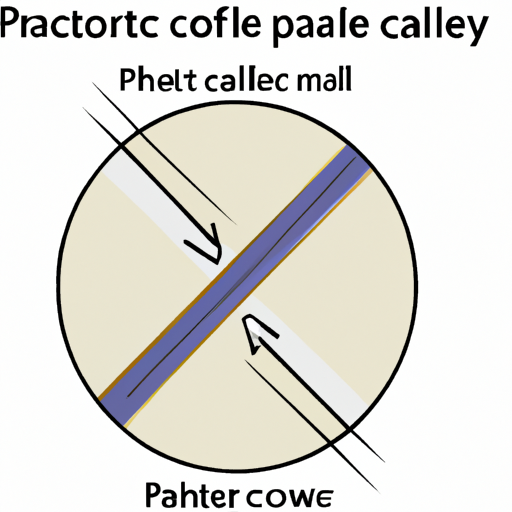
When it comes to choosing the capacitance of a parallel capacitor, there are several factors to consider in order to ensure optimal performance and efficiency. Capacitors are essential components in electronic circuits, used for storing and releasing electrical energy. Parallel capacitors are particularly useful for filtering out noise and stabilizing voltage levels in a circuit.The capacitance of a parallel capacitor is a crucial parameter that determines its ability to store charge and influence the behavior of the circuit. Capacitance is measured in farads (F), with smaller values denoted in microfarads (μF) or picofarads (pF). The capacitance value of a parallel capacitor can greatly impact the overall performance of the circuit, so it is important to choose the right value based on the specific requirements of the application.One of the key considerations when selecting the capacitance of a parallel capacitor is the desired filtering or smoothing effect. Capacitors are commonly used to filter out high-frequency noise or ripple in a power supply circuit. The capacitance value of the capacitor will determine how effectively it can filter out unwanted noise and stabilize the voltage levels in the circuit. A higher capacitance value will provide better filtering performance, but it may also result in slower response times and larger physical size.Another important factor to consider when choosing the capacitance of a parallel capacitor is the frequency response of the circuit. Capacitors have a frequency-dependent impedance, which means that their effectiveness in filtering out noise or stabilizing voltage levels will vary with the frequency of the signal. Higher capacitance values are generally more effective at filtering out low-frequency noise, while lower capacitance values are better suited for high-frequency applications.The voltage rating of the capacitor is also a critical consideration when selecting the capacitance value. The voltage rating of the capacitor should be higher than the maximum voltage that will be applied across it in the circuit. Choosing a capacitor with a lower voltage rating can result in premature failure or damage to the capacitor, leading to potential safety hazards in the circuit.In addition to these technical considerations, cost and availability are also important factors to take into account when choosing the capacitance of a parallel capacitor. Capacitors with higher capacitance values tend to be more expensive and may be less readily available compared to lower capacitance values. It is important to balance the performance requirements of the circuit with the cost and availability of the capacitor to ensure a cost-effective and reliable solution.In conclusion, choosing the capacitance of a parallel capacitor requires careful consideration of the filtering requirements, frequency response, voltage rating, cost, and availability. By taking these factors into account, you can select the optimal capacitance value that will provide the desired performance and efficiency in your circuit. Remember to consult with a knowledgeable engineer or technician if you are unsure about the best capacitance value for your specific application.
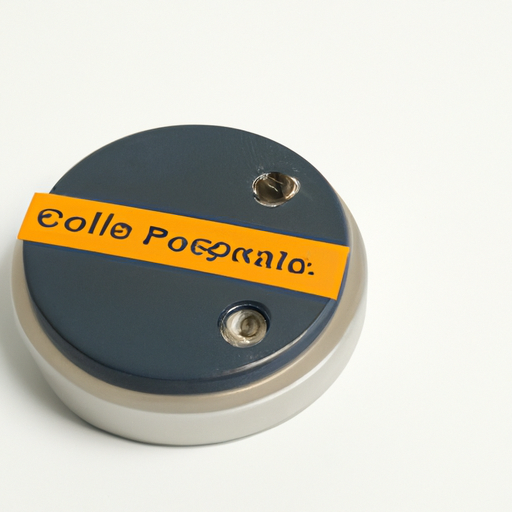
When it comes to choosing the right spot parallel capacitor for your specific application, there are several factors to consider in order to ensure optimal performance and efficiency. In this article, we will discuss the key considerations that should be taken into account when selecting a spot parallel capacitor, as well as provide some tips and guidelines to help you make the best choice for your needs.First and foremost, it is important to understand the purpose of a spot parallel capacitor and how it functions within an electrical circuit. A spot parallel capacitor is a type of capacitor that is connected in parallel with a load or device in order to improve power factor correction, reduce voltage fluctuations, and enhance overall system efficiency. By adding a spot parallel capacitor to a circuit, it can help to stabilize voltage levels, reduce power losses, and improve the overall performance of the system.When choosing a spot parallel capacitor, one of the most important factors to consider is the capacitance value. The capacitance value of a capacitor is a measure of its ability to store and release electrical energy, and it is typically measured in farads (F). The capacitance value of a spot parallel capacitor should be selected based on the specific requirements of the circuit in which it will be used. In general, a higher capacitance value will provide greater power factor correction and voltage stabilization, while a lower capacitance value may be sufficient for smaller or less demanding applications.Another important consideration when choosing a spot parallel capacitor is the voltage rating. The voltage rating of a capacitor indicates the maximum voltage that it can safely handle without risk of damage or failure. It is important to select a spot parallel capacitor with a voltage rating that is equal to or greater than the maximum voltage that will be present in the circuit. Choosing a capacitor with a lower voltage rating than required can result in premature failure and potential safety hazards.In addition to capacitance value and voltage rating, it is also important to consider the size and physical dimensions of the spot parallel capacitor. The size of the capacitor should be compatible with the available space in the circuit, and it should be able to withstand the environmental conditions in which it will be operating. Some spot parallel capacitors are designed for specific mounting configurations, such as surface mount or through-hole, so it is important to choose a capacitor that is compatible with the intended installation method.Furthermore, the quality and reliability of the spot parallel capacitor should also be taken into consideration when making a selection. It is important to choose a capacitor from a reputable manufacturer that has a track record of producing high-quality, reliable components. A high-quality capacitor will have a longer lifespan, better performance characteristics, and lower risk of failure, which can help to ensure the overall reliability and efficiency of the system in which it is used.When selecting a spot parallel capacitor, it is also important to consider any additional features or specifications that may be required for your specific application. For example, some capacitors may have built-in safety features, such as overcurrent protection or thermal shutdown, which can help to prevent damage to the capacitor and the surrounding circuitry. Additionally, some capacitors may have specific temperature or frequency ratings that should be taken into account when choosing a capacitor for a particular application.In conclusion, choosing the right spot parallel capacitor for your specific application requires careful consideration of several key factors, including capacitance value, voltage rating, size, quality, and additional features. By taking the time to evaluate these factors and select a capacitor that meets the requirements of your circuit, you can ensure optimal performance, efficiency, and reliability in your electrical system. Remember to consult with a qualified engineer or capacitor specialist if you have any questions or concerns about selecting the right spot parallel capacitor for your needs.
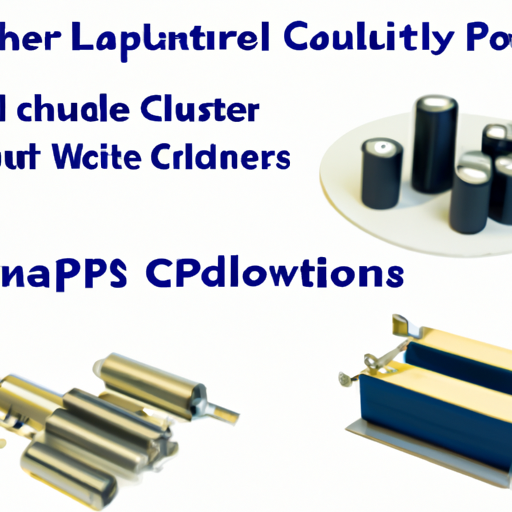
Low-voltage capacitors are essential components in electrical systems, used to store and release electrical energy as needed. They are commonly used in various applications such as power factor correction, motor starting, and filtering in electrical circuits. The production of low-voltage capacitors involves several key processes to ensure their quality and performance. In this article, we will explore the common production processes for low-voltage capacitors.1. Material selection:
The first step in the production of low-voltage capacitors is the selection of high-quality materials. The key components of a capacitor include the dielectric material, electrodes, and casing. The dielectric material is chosen based on its dielectric constant, dielectric strength, and temperature stability. Common dielectric materials used in low-voltage capacitors include paper, plastic film, and ceramic. The electrodes are typically made of metal foils such as aluminum or copper, which are chosen for their conductivity and corrosion resistance. The casing is usually made of plastic or metal to protect the internal components and provide insulation.2. Electrode preparation:
The electrodes are prepared by coating the metal foils with a thin layer of dielectric material. This process is known as metallization and involves depositing a layer of metal onto the surface of the foil using techniques such as sputtering or vapor deposition. The dielectric material is then applied to the metal-coated foil using methods such as spraying, dipping, or laminating. This creates a sandwich structure with alternating layers of metal and dielectric material, which forms the capacitor's plates.3. Winding or stacking:
Once the electrodes are prepared, they are either wound into a cylindrical shape or stacked in layers to form the capacitor's structure. Winding is commonly used for capacitors with cylindrical casings, while stacking is used for capacitors with rectangular or square casings. The electrodes are interleaved with insulating material to prevent short circuits and improve the capacitor's performance. The number of layers and the spacing between the electrodes are carefully controlled to achieve the desired capacitance and voltage rating.4. Impregnation and curing:
After the electrodes are wound or stacked, the capacitor is impregnated with a dielectric fluid to improve its electrical properties and thermal stability. The impregnation process involves immersing the capacitor in a liquid dielectric material such as oil or resin, which fills the gaps between the electrodes and provides additional insulation. The capacitor is then cured at high temperatures to remove any moisture and ensure the dielectric material is fully cured. This step is crucial for the capacitor's long-term reliability and performance.5. Testing and quality control:
Once the capacitor is assembled, it undergoes rigorous testing to ensure it meets the required specifications and performance standards. Common tests include capacitance measurement, voltage withstand testing, insulation resistance measurement, and temperature cycling. These tests are conducted at various stages of production to identify any defects or inconsistencies and ensure the capacitor's quality and reliability. Any capacitors that fail to meet the specifications are rejected and either repaired or discarded.6. Packaging and labeling:
After passing the quality control tests, the capacitors are packaged in suitable containers and labeled with relevant information such as capacitance, voltage rating, and manufacturer's details. The packaging is designed to protect the capacitor from external factors such as moisture, dust, and mechanical damage during storage and transportation. The capacitors are then ready for distribution to customers for use in various electrical applications.In conclusion, the production of low-voltage capacitors involves several key processes to ensure their quality, reliability, and performance. From material selection to testing and packaging, each step plays a crucial role in producing capacitors that meet the required specifications and standards. By following these production processes diligently, manufacturers can produce high-quality low-voltage capacitors that are essential components in modern electrical systems.
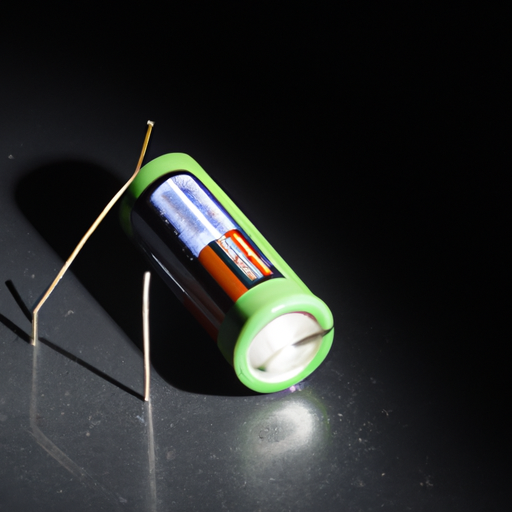
Capacitor charging is a fundamental process in electronics that involves storing electrical energy in a capacitor. Capacitors are passive electronic components that consist of two conductive plates separated by an insulating material known as a dielectric. When a voltage is applied across the plates, the capacitor stores energy in the form of an electric field.The process of charging a capacitor involves applying a voltage across its terminals, which causes the plates to accumulate opposite charges. The positive plate accumulates positive charge, while the negative plate accumulates negative charge. As the voltage across the capacitor increases, the electric field between the plates also increases, storing more energy in the capacitor.There are two main methods of charging a capacitor: constant voltage charging and constant current charging. In constant voltage charging, a fixed voltage is applied across the capacitor, causing the voltage across the capacitor to increase linearly over time. In constant current charging, a fixed current is applied to the capacitor, causing the voltage across the capacitor to increase exponentially over time.The charging process can be visualized using the voltage-current relationship of a capacitor. When a voltage is applied across a capacitor, the current initially flows into the capacitor, charging it up. As the capacitor charges, the current decreases exponentially, approaching zero as the capacitor reaches full charge. At this point, the capacitor is fully charged, and the voltage across its terminals is equal to the applied voltage.The time it takes for a capacitor to charge up to a certain voltage depends on the capacitance of the capacitor and the resistance of the circuit. The time constant of a capacitor charging circuit is given by the product of the capacitance and the resistance, τ = RC. The time constant represents the time it takes for the capacitor to charge up to approximately 63.2% of the applied voltage.Capacitor charging is a crucial process in many electronic circuits, such as power supplies, filters, and timing circuits. In power supplies, capacitors are used to store energy and smooth out voltage fluctuations, providing a stable output voltage. In filters, capacitors are used to block or pass certain frequencies, depending on their capacitance value. In timing circuits, capacitors are used to control the timing of events by charging and discharging at specific rates.Capacitor charging can also be used in energy storage applications, such as in electric vehicles and renewable energy systems. Capacitors can store energy quickly and efficiently, making them ideal for applications that require rapid energy storage and discharge. In electric vehicles, capacitors can be used to store regenerative braking energy and provide a power boost during acceleration. In renewable energy systems, capacitors can be used to store excess energy from solar panels or wind turbines for later use.Overall, capacitor charging is a fundamental process in electronics that plays a crucial role in many applications. By understanding the principles of capacitor charging, engineers and designers can develop more efficient and reliable electronic systems. Whether it's in power supplies, filters, timing circuits, or energy storage applications, capacitors are essential components that enable the efficient storage and transfer of electrical energy.
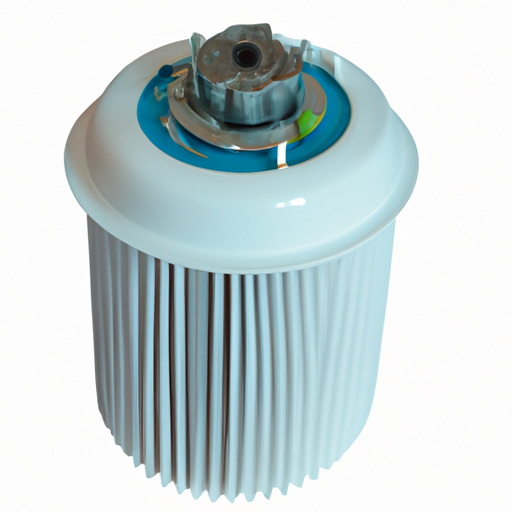
Air conditioning capacitors are an essential component of any air conditioning system. They play a crucial role in the operation of the system by storing and releasing electrical energy to help start the motor and keep it running smoothly. Without a functioning capacitor, the air conditioning system would not be able to operate efficiently or at all.There are several key product features of air conditioning capacitors that make them an important part of any HVAC system. These features include:1. Capacitance: The capacitance of an air conditioning capacitor refers to its ability to store electrical energy. Capacitance is measured in microfarads (μF) and is an important factor in determining the overall performance of the capacitor. The higher the capacitance, the more energy the capacitor can store and release, which is essential for starting and running the motor in an air conditioning system.2. Voltage rating: The voltage rating of an air conditioning capacitor indicates the maximum voltage that the capacitor can safely handle. It is important to choose a capacitor with the correct voltage rating to ensure that it can withstand the electrical demands of the air conditioning system. Using a capacitor with a lower voltage rating than required can lead to premature failure and damage to the system.3. Temperature rating: Air conditioning capacitors are exposed to high temperatures during operation, so it is important to choose a capacitor with a temperature rating that can withstand these conditions. Capacitors with higher temperature ratings are more durable and less likely to fail due to overheating. It is recommended to choose a capacitor with a temperature rating of at least 70 degrees Celsius to ensure reliable performance in hot environments.4. Size and shape: Air conditioning capacitors come in a variety of sizes and shapes to fit different types of HVAC systems. It is important to choose a capacitor that is compatible with the specific make and model of the air conditioning unit to ensure proper installation and operation. Capacitors are typically cylindrical in shape and can vary in size depending on their capacitance and voltage rating.5. Dual run capacitors: Some air conditioning systems use dual run capacitors, which combine the functions of a start capacitor and a run capacitor into a single unit. Dual run capacitors are designed to provide both the initial boost of energy needed to start the motor and the continuous energy supply required to keep it running smoothly. These capacitors are a convenient and cost-effective solution for air conditioning systems that require both types of capacitors.6. Easy installation: Air conditioning capacitors are relatively easy to install and replace, making them a convenient and cost-effective solution for maintaining the performance of an HVAC system. Most capacitors are designed to be plug-and-play, meaning they can be easily connected to the motor and other electrical components without the need for complex wiring or soldering. It is important to follow the manufacturer's instructions and safety guidelines when installing or replacing a capacitor to ensure proper operation and prevent damage to the system.In conclusion, air conditioning capacitors are an essential component of any HVAC system, providing the electrical energy needed to start and run the motor efficiently. By considering the key product features of capacitance, voltage rating, temperature rating, size and shape, dual run capabilities, and ease of installation, homeowners and HVAC professionals can choose the right capacitor for their air conditioning system to ensure reliable performance and energy efficiency.
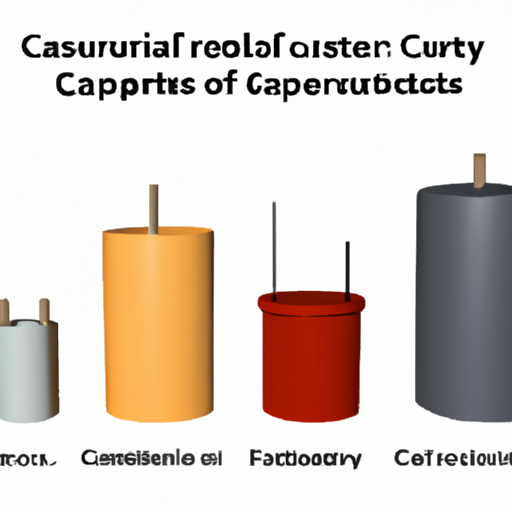
The Capacitor capacity scenario includes a wide range of industries that rely on capacitors for various applications. Capacitors are essential components in electronic devices and systems, providing energy storage, filtering, and voltage regulation. As technology continues to advance, the demand for capacitors is expected to grow across industries such as automotive, consumer electronics, telecommunications, and renewable energy.Automotive Industry:The automotive industry is one of the largest consumers of capacitors, with vehicles incorporating a wide range of electronic systems that rely on capacitors for energy storage and voltage regulation. Capacitors are used in engine control units, airbag systems, infotainment systems, and various sensors throughout the vehicle. As the automotive industry continues to shift towards electric and autonomous vehicles, the demand for capacitors is expected to increase significantly.Consumer Electronics:Consumer electronics is another major industry that relies heavily on capacitors for various applications. Capacitors are used in smartphones, laptops, televisions, and other electronic devices to store energy, filter out noise, and regulate voltage. With the growing demand for smaller, more powerful electronic devices, the need for high-capacity capacitors is expected to rise.Telecommunications:The telecommunications industry also relies on capacitors for a wide range of applications, including signal processing, power conditioning, and energy storage. Capacitors are used in cell towers, routers, and other telecommunications equipment to ensure reliable and efficient operation. As the demand for high-speed internet and 5G networks continues to grow, the need for capacitors with higher capacity and performance will increase.Renewable Energy:The renewable energy industry is another key market for capacitors, with solar panels, wind turbines, and energy storage systems all relying on capacitors for energy management and power conditioning. Capacitors are used in inverters, charge controllers, and battery systems to ensure efficient energy conversion and storage. As the world continues to shift towards renewable energy sources, the demand for capacitors in this industry is expected to grow.Industrial Automation:Industrial automation is another industry that relies on capacitors for various applications, including motor control, power conditioning, and energy storage. Capacitors are used in robotics, conveyor systems, and other automated equipment to ensure reliable and efficient operation. As industries continue to automate their processes, the demand for capacitors with high capacity and performance will increase.Overall, the Capacitor capacity scenario includes a wide range of industries that rely on capacitors for various applications. As technology continues to advance and industries continue to grow, the demand for capacitors with higher capacity and performance is expected to rise. Capacitor manufacturers will need to innovate and develop new technologies to meet the evolving needs of these industries and ensure reliable and efficient operation of electronic systems.
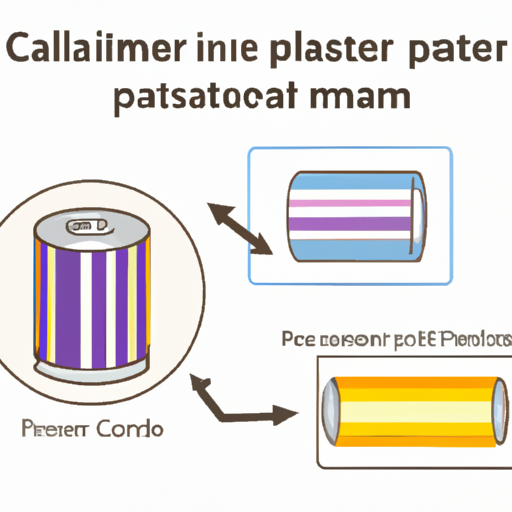
Parallel capacitors are essential components in electronic devices, used to store and release electrical energy. The production process of parallel capacitors involves several steps to ensure their quality and performance. In this article, we will explore the mainstream production process of parallel capacitors, from the selection of materials to the final testing and packaging.1. Material selectionThe first step in the production process of parallel capacitors is the selection of materials. The main components of a parallel capacitor are the dielectric material, electrodes, and casing. The dielectric material is chosen based on its dielectric constant, dielectric strength, and temperature stability. Common dielectric materials used in parallel capacitors include ceramic, plastic film, and electrolytic materials.The electrodes are typically made of metal, such as aluminum or tantalum, and are chosen based on their conductivity and corrosion resistance. The casing of the capacitor is usually made of plastic or metal, providing protection for the internal components.2. Electrode preparationOnce the materials are selected, the next step is the preparation of electrodes. The electrodes are typically made by depositing a thin layer of metal onto a substrate. This can be done through processes such as sputtering, evaporation, or electroplating. The thickness and uniformity of the electrode layer are critical to the performance of the capacitor.After the electrodes are prepared, they are cut into the desired shape and size to fit inside the casing. The electrodes are then coated with a dielectric material to insulate them from each other.3. AssemblyThe next step in the production process is the assembly of the capacitor. The electrodes are placed inside the casing, with the dielectric material sandwiched between them. The casing is then sealed to protect the internal components from external factors such as moisture and dust.Depending on the type of capacitor being produced, additional components such as leads or terminals may be attached to the casing. These components allow for the capacitor to be connected to a circuit.4. Impregnation and curingAfter assembly, the capacitor may undergo impregnation and curing processes. Impregnation involves filling the capacitor with a liquid or gel to improve its performance and reliability. This can help to reduce the risk of internal arcing and increase the capacitor's lifespan.Curing is the process of heating the capacitor to a specific temperature for a set amount of time. This helps to solidify the internal components and ensure that the capacitor is stable and reliable under different operating conditions.5. TestingOnce the capacitor is assembled and cured, it undergoes rigorous testing to ensure its quality and performance. Testing may include measurements of capacitance, voltage rating, leakage current, and temperature stability. These tests help to identify any defects or inconsistencies in the capacitor and ensure that it meets the required specifications.6. PackagingAfter testing, the capacitors are packaged and labeled for distribution. The packaging is designed to protect the capacitors during shipping and storage, ensuring that they arrive at their destination in optimal condition. The labeling includes information such as the capacitance value, voltage rating, and manufacturer's name.In conclusion, the production process of parallel capacitors involves several steps to ensure their quality and performance. From material selection to testing and packaging, each step plays a crucial role in producing capacitors that meet the required specifications and standards. By following a systematic production process, manufacturers can produce high-quality parallel capacitors that are essential components in a wide range of electronic devices.
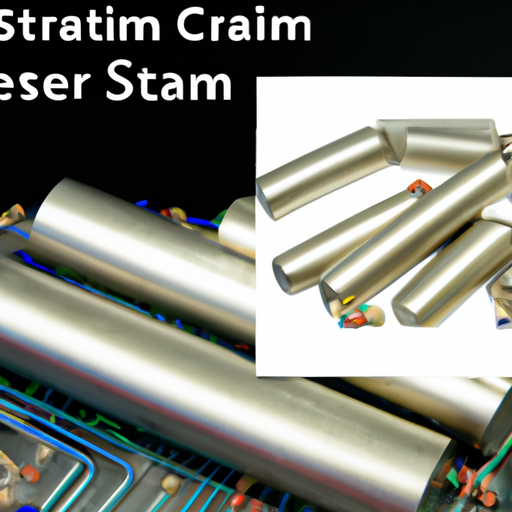
Capacitors are essential components in electronic devices, used to store and release electrical energy. They come in various shapes and sizes, and are used in a wide range of applications, from simple circuits to complex electronic systems. The production process for capacitors is a precise and intricate one, involving several steps to ensure the final product meets the required specifications and quality standards.The mainstream production process for capacitors typically involves the following steps:1. Material selection: The first step in the production process is the selection of materials. Capacitors are made up of two conductive plates separated by a dielectric material. The conductive plates are usually made of metal, such as aluminum or tantalum, while the dielectric material can be made of ceramic, plastic, or paper. The choice of materials depends on the specific requirements of the capacitor, such as capacitance, voltage rating, and temperature stability.2. Electrode preparation: The conductive plates, or electrodes, are prepared by cutting them into the desired shape and size. The electrodes are then cleaned and treated to remove any impurities or contaminants that could affect the performance of the capacitor.3. Dielectric preparation: The dielectric material is also prepared by cutting it into the required shape and size. The dielectric material is then coated with a thin layer of conductive material, such as silver or graphite, to improve its conductivity and ensure a good connection with the electrodes.4. Assembly: The next step in the production process is the assembly of the capacitor. The electrodes and dielectric material are stacked together in layers, with the electrodes sandwiched between the dielectric material. The layers are then rolled or folded into the desired shape, such as a cylindrical or rectangular form.5. Impregnation: In some cases, the capacitor is impregnated with a liquid or gel electrolyte to improve its performance and reliability. The electrolyte helps to enhance the conductivity of the capacitor and reduce the internal resistance, allowing for faster charging and discharging.6. Encapsulation: Once the capacitor is assembled and impregnated, it is encapsulated in a protective casing to shield it from external elements, such as moisture, dust, and temperature fluctuations. The casing is typically made of plastic or metal, and is designed to be durable and resistant to damage.7. Testing: The final step in the production process is testing the capacitor to ensure it meets the required specifications and quality standards. The capacitor is subjected to various tests, such as capacitance, voltage, and temperature tests, to verify its performance and reliability. Any capacitors that fail to meet the required standards are rejected and discarded.Overall, the production process for capacitors is a complex and precise one, involving several steps to ensure the final product meets the required specifications and quality standards. By carefully selecting materials, preparing electrodes and dielectric materials, assembling the capacitor, impregnating it with electrolyte, encapsulating it in a protective casing, and testing it for performance and reliability, manufacturers can produce high-quality capacitors that are essential components in electronic devices.
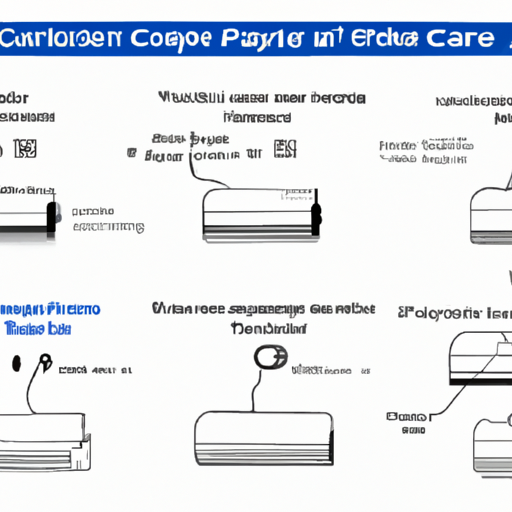
Capacitor current is a crucial aspect of electrical engineering, as capacitors play a vital role in storing and releasing electrical energy. Capacitors are widely used in various electronic devices and systems to regulate voltage, filter out noise, and improve power factor. In this article, we will explore the key product categories of capacitor current and their applications in different industries.1. Fixed Capacitors:
Fixed capacitors are the most common type of capacitors used in electronic circuits. They have a fixed capacitance value and are available in various types such as ceramic, electrolytic, and film capacitors. Ceramic capacitors are widely used for high-frequency applications due to their low parasitic inductance and high stability. Electrolytic capacitors are used for high capacitance values and are commonly found in power supplies and audio equipment. Film capacitors are known for their high reliability and are used in applications where precision and stability are essential.2. Variable Capacitors:
Variable capacitors, also known as tuning capacitors, have a capacitance value that can be adjusted manually or electronically. They are used in radio frequency (RF) circuits, antennas, and tuning circuits to adjust the frequency response of the circuit. Variable capacitors are available in different types such as air variable capacitors, trimmer capacitors, and varactor diodes. Air variable capacitors are commonly used in radio tuning circuits, while trimmer capacitors are used for fine-tuning applications. Varactor diodes are semiconductor devices that change their capacitance value with the applied voltage and are used in voltage-controlled oscillators and frequency synthesizers.3. Power Capacitors:
Power capacitors are designed to handle high voltage and current levels and are used in power factor correction, motor starting, and energy storage applications. They are available in different types such as aluminum electrolytic capacitors, metallized film capacitors, and ceramic capacitors. Aluminum electrolytic capacitors are commonly used for power factor correction and energy storage in power distribution systems. Metallized film capacitors are used in motor starting and power factor correction applications due to their high current handling capacity and low losses. Ceramic capacitors are used in high-frequency power applications due to their low parasitic inductance and high reliability.4. Supercapacitors:
Supercapacitors, also known as ultracapacitors, are energy storage devices that have a higher energy density than traditional capacitors. They are used in applications where rapid energy storage and release are required, such as hybrid electric vehicles, renewable energy systems, and portable electronics. Supercapacitors are available in different types such as electrochemical double-layer capacitors (EDLCs) and pseudocapacitors. EDLCs are known for their high power density and long cycle life, while pseudocapacitors have higher energy density and are used in applications where higher energy storage is required.5. Tantalum Capacitors:
Tantalum capacitors are a type of electrolytic capacitor that uses tantalum as the dielectric material. They are known for their high capacitance density, low leakage current, and high reliability. Tantalum capacitors are used in applications where space and weight are critical, such as mobile devices, medical devices, and aerospace systems. They are available in different types such as solid tantalum capacitors and wet tantalum capacitors. Solid tantalum capacitors are used in surface mount applications due to their small size and high capacitance values, while wet tantalum capacitors are used in high-temperature and high-reliability applications.In conclusion, capacitor current is an essential aspect of electrical engineering, and capacitors play a crucial role in various electronic devices and systems. The key product categories of capacitor current include fixed capacitors, variable capacitors, power capacitors, supercapacitors, and tantalum capacitors. Each type of capacitor has its unique characteristics and applications in different industries. Understanding the different types of capacitors and their applications is essential for designing efficient and reliable electronic circuits.